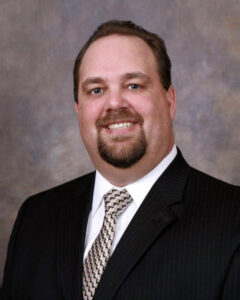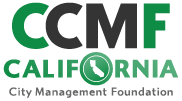What inspired you to enter city management?

Who knows they want to be a city manager in high school? I did! I attended Damien High School in La Verne. The school requires 100 hours of community service as a graduation requirement. I went to city hall and was introduced to City Manager Marty Lomeli, who is a Damien alum. He offered me the opportunity to intern in his office. After 101 hours, I was put on the payroll as an intern and spent a little over a year working in his office. He became a friend and mentor of mine. After that experience, my education and career development focus on helping me become a city manager. When I became city manager of West Covina in 2015, Marty swore me in.
How did you become a city manager?
See above. In addition, I spent 14 years with West Covina taking on every task and assignment available to garner the knowledge needed to make me better prepared for the city manager role—especially the projects nobody wanted. This helped me earn the respect of others in the organization, including department heads and the city council. When a new city council came on board and wanted to change the direction of the organization (2015), I was given the opportunity to serve as city manager for over three years. I left in March 2019 and joined Indian Wells in May 2019.
What do you enjoy the most about your role?
I enjoy developing the team and seeing them be successful in their day-to-day operations and celebrating their successes and achievements. I also love doing long lasting projects (e.g., new or remodeled parks, development projects, etc.) or historically-challenging projects and turning them around.
What role does a city manager play in local government, and how do you feel it differs from that of a council member or mayor?
In the council-manager form of government, the council sets the policy, and the manager enacts that policy. I think the manager role is much more than that. It is also building relations with the city council to instill trust and support for one another. This allows both to stay in their lanes too. I find the organization is much more successful when the council and manager have a partnership to work together for the betterment of the community. When other stakeholders (e.g., staff, residents, developers) see this type of relationship, I believe they, too, appreciate this cordial and friendly approach to resolve the issues facing the community.
What does your typical day look like?
I believe many in our profession will have the same response—no two days are typical or alike. The morning starts off with an update of the previous night’s activities—followed by checking in with staff on any activities of the day. I also go through a lot of emails and make calls to city council members, making sure they are updated on the happenings in the community. On the good days, there’s interaction with staff throughout the organization. Having worked for West Covina (staff of over 300) and Indian Wells (staff of around 30), I enjoy making my rounds around the city to see how the staff is doing, and making sure I am accessible to them. Much harder to do so in a larger organization. This one-on-one time is invaluable.
What city project are you most proud of?
I can name a few, but I think the one I am most proud of today is the city of Indian Wells’ first park. The dedication is on April 15 and was not an easy project to move through the process. The community has been very appreciative of the new addition to the community.
What are the greatest challenges facing city managers in the state today?
Our positions are hard enough, but I think the efforts by the State of California to take more local control away from our communities is a major threat to the profession. As this local control erodes and frustration increases from residents and elected officials, I find less qualified individuals are wanting to take on the city manager role. There is a lot to be said about remaining an assistant city manager.
When and how do you interact with the residents of your city?
As a small community, I have constant interaction with the community. Any member of the community that emails or calls my office will get a response from me. We also host numerous community events and activities that provide access to the city council and city manager. One thing I enjoy is the quarterly “Coffee with the City Manager.” This provides residents the opportunity to listen to an update on the community from me and lets them ask questions on any rumors or projects that are being proposed. All the department heads are present too. This allows our residents to fully interact with the staff and resolve any issues or concerns they have.
What is the role of a city manager in upholding the public’s trust in local government?
The city manager may not be as visible as a mayor or city councilmember in a community, but I believe the city manager has the highest level of upholding the public’s trust. In some communities, council members come and go. City managers and staff are the bedrock of protecting the best interest of the community. They are also the ones that have the difficult responsibility of telling the city council no, from time to time. The public depends on a strong city manager to help provide a sense of checks and balances in the community.
How are cities shaping the future of California?
At the local level, cities are the ones that continue to reinvent themselves to address challenges they face. Doing so, they drive economic growth, foster innovation and creativity, influence public policy at the state/national level, and serve as the recreational and cultural centers of a community. As cities succeed, so too does the state.
Anything else you’d like to share?
I love the Los Angeles Dodgers and Notre Dame Football, golf (so many courses to choose from in the Coachella Valley), traveling with my wife, Amy, and finishing up my Ph.D. this summer in Public Policy and American Politics from Claremont Graduate University. I’m celebrating my fifth year as the city manager of Indian Wells in May and look forward to many more years here. Professionally, I can’t imagine a more enjoyable and supportive community than Indian Wells.
